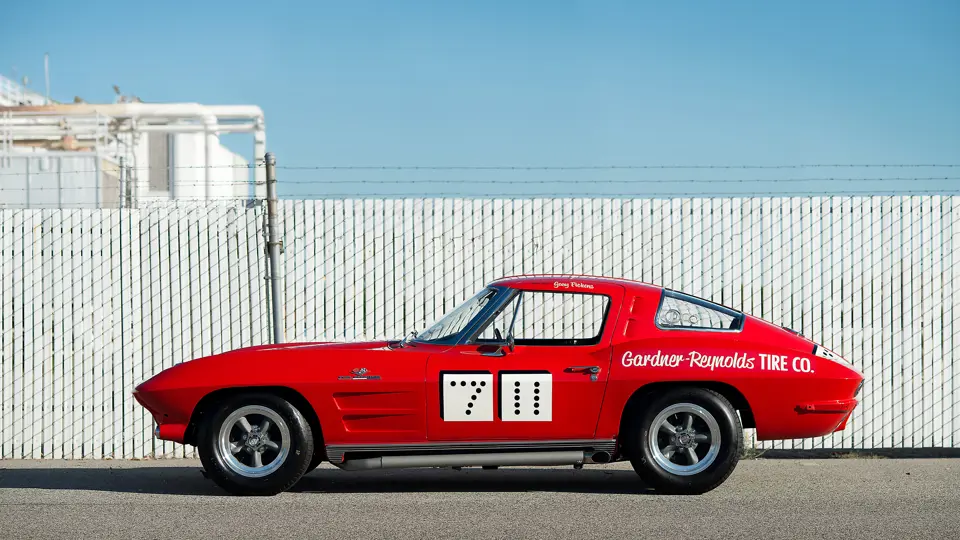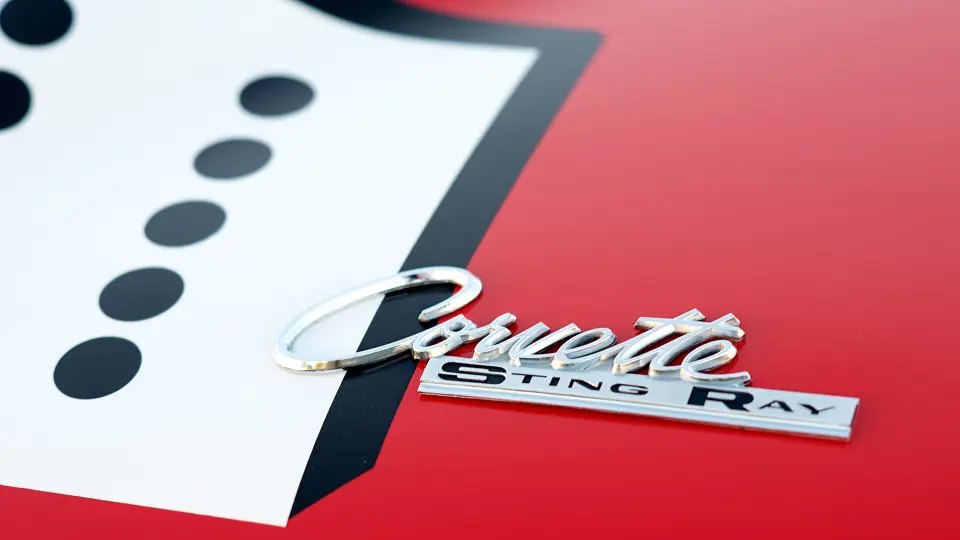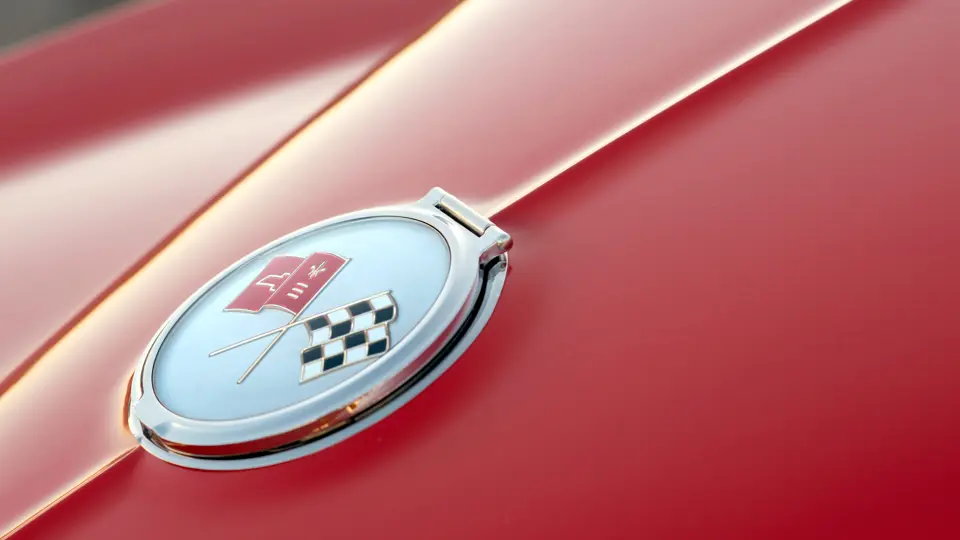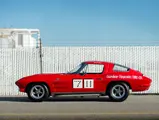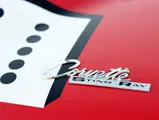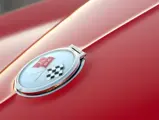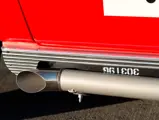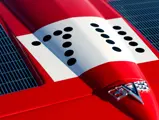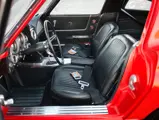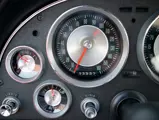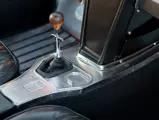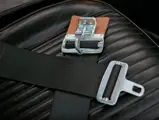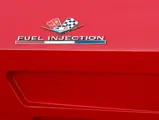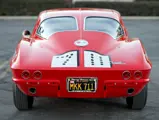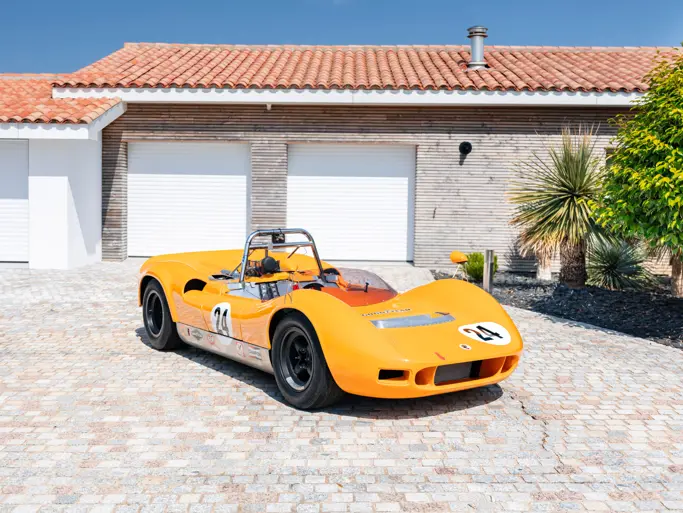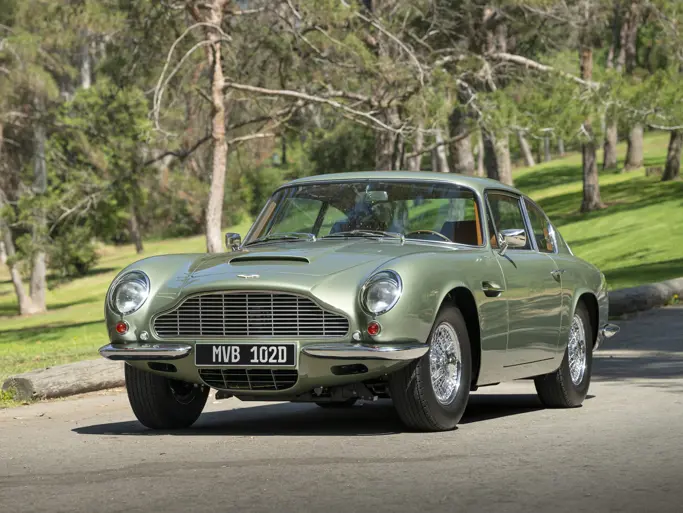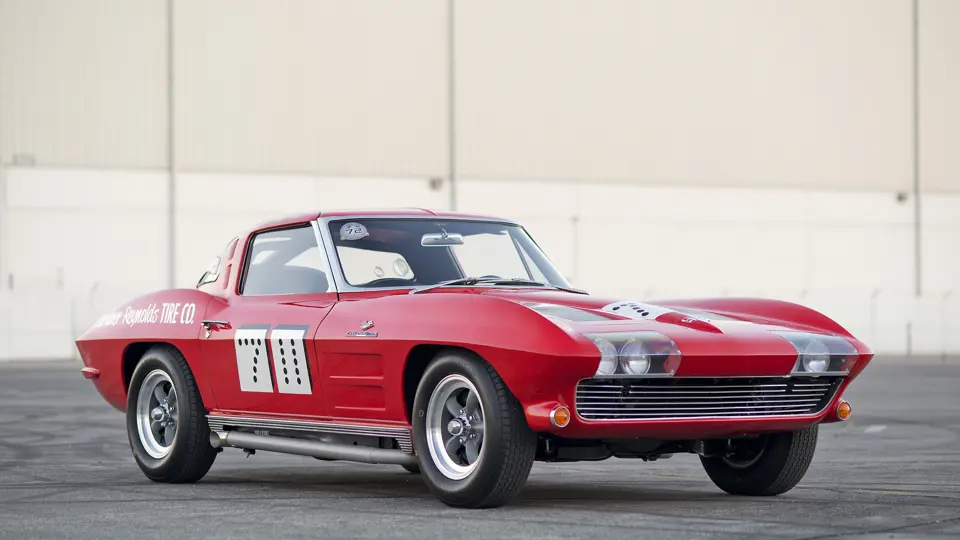
1963 Chevrolet Corvette Sting Ray Split-Window Racecar "7 11"
{{lr.item.text}}
$375,000 - $475,000 USD | Not Sold
{{bidding.lot.reserveStatusFormatted}}
- Used on screen in Viva Las Vegas
- Extensive Southern California race history
- Z06 competition components installed in period
- NCRS American Heritage Award certified
375 bhp, 327 cu. in. OHV V-8 engine with Rochester Ram-Jet mechanical fuel injection, four-speed manual transmission, independent front suspension with wishbones, coil springs, and anti-roll bar, independent rear suspension with lower wishbones, control arms, radius arms, and transverse leaf spring, and four-wheel competition hydraulic drum brakes. Wheelbase: 98 in.
As well as being a racer, Gary Pickens was a gambling man. He liked rolling the dice, but he kept his cars shiny side up, and he had sponsorship from his employers at Harry Mann Chevrolet on Crenshaw Boulevard in Los Angeles.
Harry Mann was the self-professed “number one” dealer of Corvettes in America, so you can believe that’s what they had Gary Pickens racing. And you can believe that when Pickens saw the Corvette Z06s debut in a fight for their life against the Cobras in their own debut at Riverside on October 13, 1962, he wasn’t pulling for Carroll Shelby’s team.
But Gary Pickens wasn’t Dave MacDonald, Bob Bondurant, Paul Reinhart, or Doug
Hooper, the first four drivers to get the still-experimental Z06 Corvettes. And as the car package wasn’t made available over the counter until December 14, 1962, Harry Mann Chevrolet couldn’t help Gary get the car he wanted. As the sales manager, however, he could order his own, new, 1963 split-window, fuel-injected coupe.
This was to be Gary’s personal race car, and if he couldn’t yet have a Z06, then he was going to use his connections to make his own. The car probably came off the truck and went straight into the shop, where his modifications included a roll cage, a comprehensive weight-reduction program, and competition brakes.
Through 1963, Gary Pickens campaigned this Corvette all over California, including races at Dodger Stadium, Riverside, Laguna Seca, Santa Barbara, Pomona, and Del Mar. Sometime later in the year, he damaged the factory engine, and again, he used his dealership connections to source a new 1964 competition block.
During that same year, between July 15 and September 15 of 1963, the racing-themed Elvis Presley and Ann-Margaret movie Viva Las Vegas was filming in Nevada, and the producers went looking for real race cars. The cast of cars included Ol’ Yaller Mk II and III, several important Ferraris, a Maserati Tipo 63, and more. So, if there was going to be a Corvette, and a racing movie in the early sixties had to have a Corvette, it had to stand out. Gary Pickens, with his “7 11” dice livery as the competition number, had just the car.
According to Pickens’ friend, Peter Luongo, Gary received the largest payday of his career from MGM, which not only rented the car for the duration, but also reportedly had Gary drive it, paying him a $500 bonus for the famous spinout scene. That scene may explain the only damage the car suffered in its career, because, aside from the rear clip, neither the fiberglass nor frame was ever damaged.
In October of 1963, Pickens advertised his coupe in Motor Racing, as a “1963 lightweight competition Sting Ray Coupe with Z06 factory options.” It appears that it was months before he made a sale, because, in April 1964, famed photographer Dave Friedman photographed him at Del Mar, just one of a number of fantastic period photos of Pickens and “7 11.”
When he did sell it, it passed into the hands of racer Ron Herrara, and then, in 1972, it moved into civilian ownership, and as just another old race car, it was street-driven in Los Angeles, roll cage and all, before being garaged. Because of its use during the crucial period of Z06 development and its immortal role in Viva Las Vegas, the “7 11” Corvette was a target for many collectors, including Z06 expert Franz Estereicher, but the owners never even told anyone they owned it, let alone where it was.
In fact, it wasn’t heard about again until 2011, when Corvette specialist Mike Scott was manning his booth at the Long Beach swap meet. He didn’t have the exhaust hangar a customer wanted, but he did have it back at the shop, and they struck up a friendship. A year later, he had learned this was the owner of “7 11,” and they had become close enough that Mike went to Torrance, California, and saw the car in pieces. Mike Scott, the consignor, and restorer Gary Nabers quickly established its bona fides and purchased the car. Nabers Brothers, of Houston, Texas, completed the exacting, highly correct, no-expense-spared restoration in March 2013, with the car prepared to “as raced” standards in order to qualify for the National Corvette Restorers Society American Heritage Award.
While the restoration is to concours quality, most of the original interior was preserved. Amazingly, not only does it have the 1964 competition engine that Pickens installed, it also has the factory matching-numbers T-10 transmission. Rare period Z06 parts were sourced, as needed, to ensure that the car is in every respect identical to how it was raced at Riverside in 1963. Additionally, “7 11” has been accepted into the Registry of Corvette Race Cars, making it easily eligible for any appropriate vintage event. A new owner will wish to obtain additional details of the car’s many unique, original features from the consignor.
Since restoration, the car has been completely mechanically sorted. This Sting Ray Coupe runs smooth and hard, tracking straight and stopping with authority. It would happily devour the curves of a mountain tour as easily as it would take to the corkscrew at Laguna Seca once again.
The Gary Pickens “7 11” Sting Ray Coupe is an indelible part of the golden era of Corvette racing history, one that was lost for almost 40 years. Few cars have the history, appeal, and provenance that it possesses as a race car, and “7 11” is an iconic movie car on top of that. If there’s a real deal, this is it.
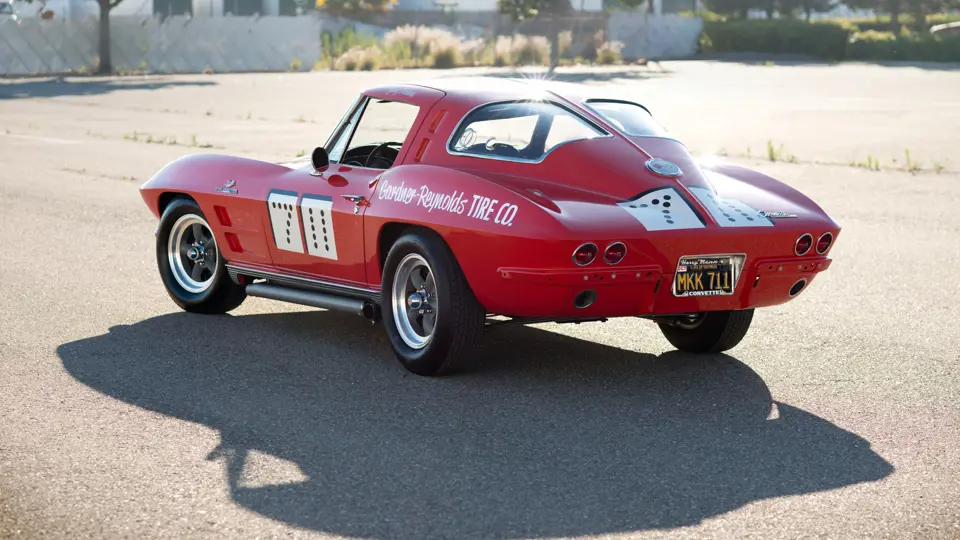



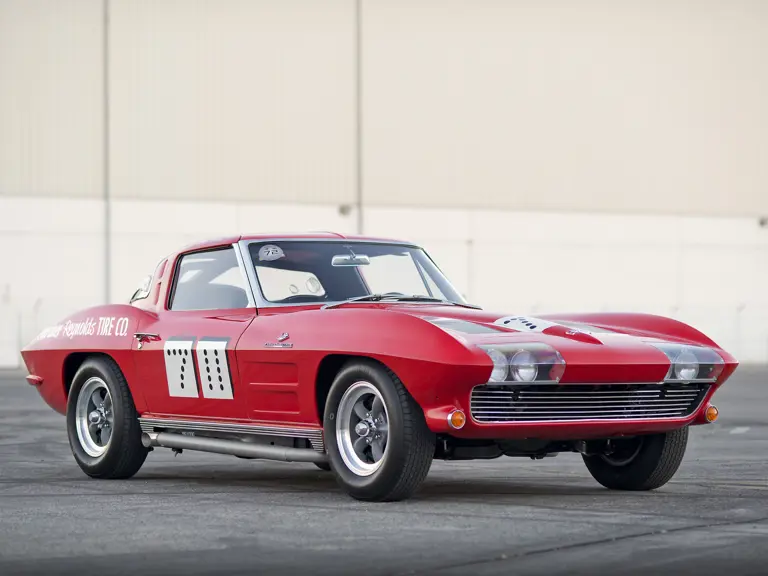
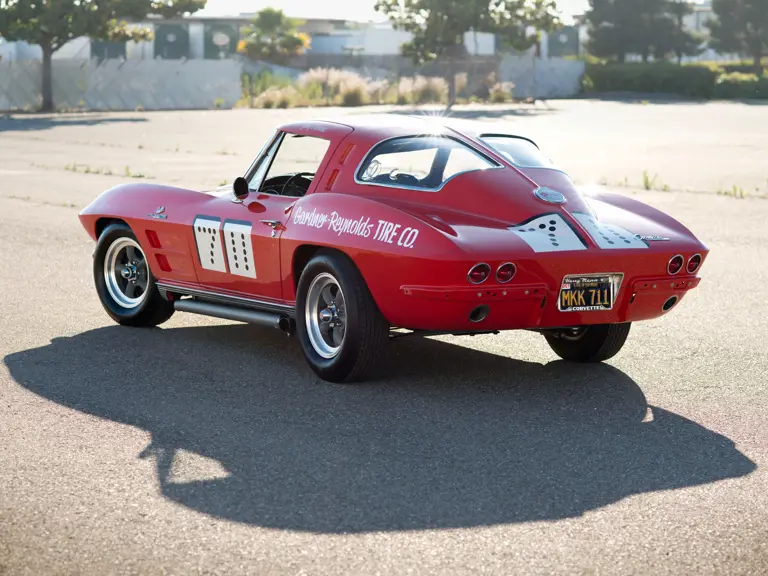

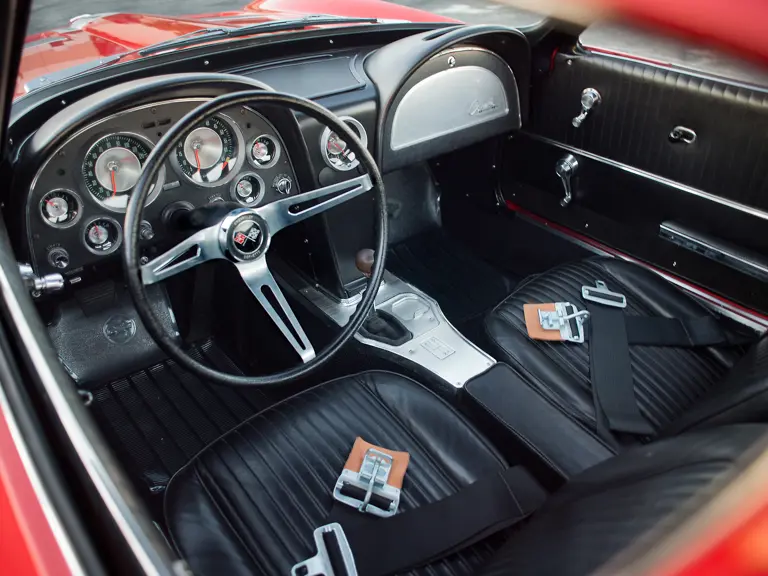

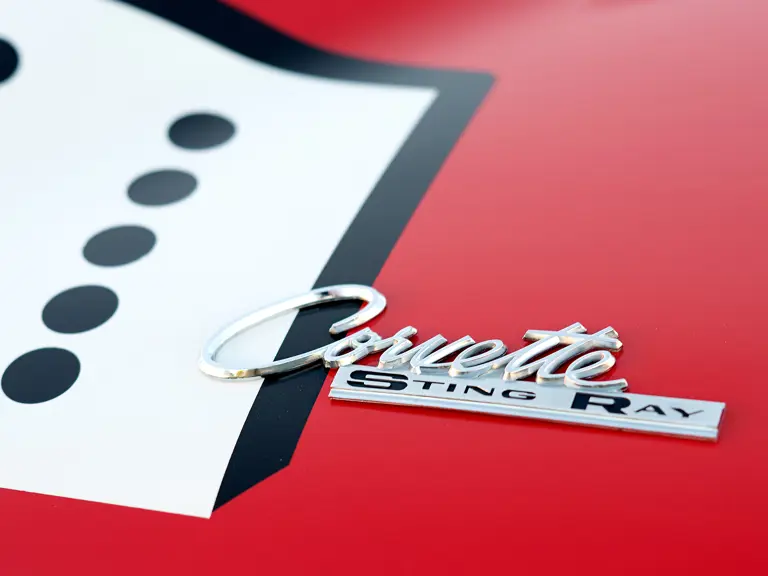

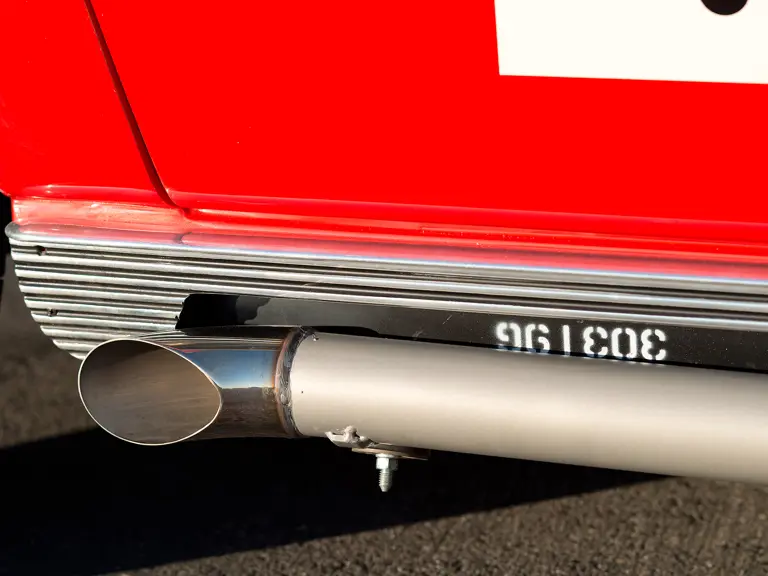
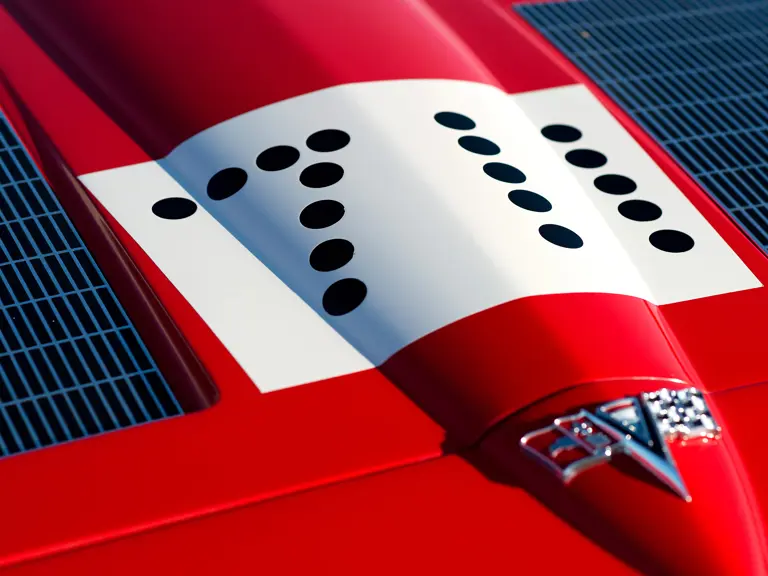
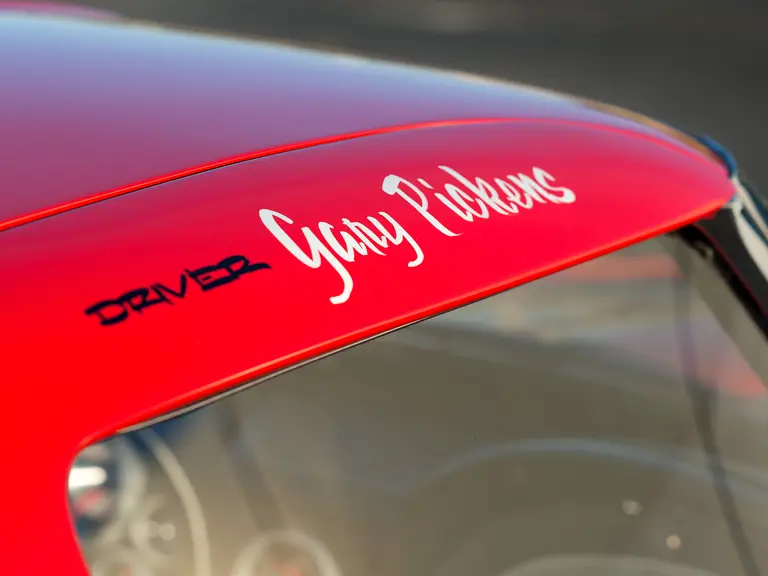
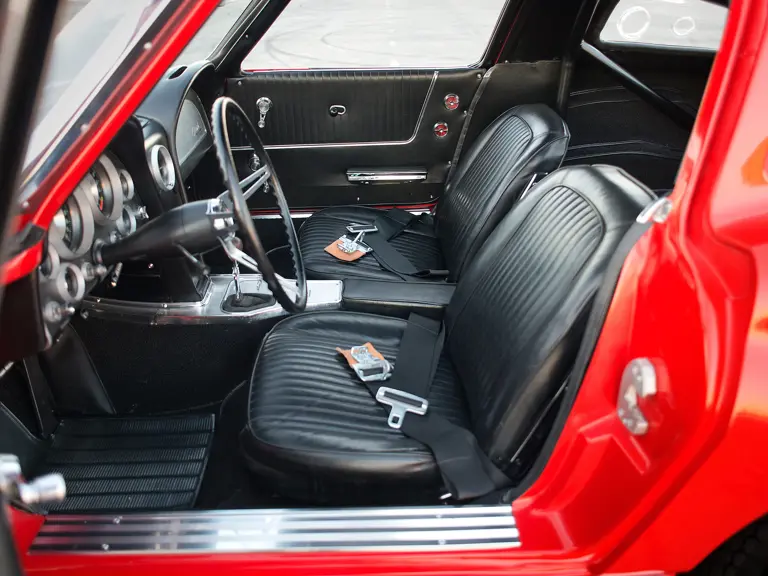


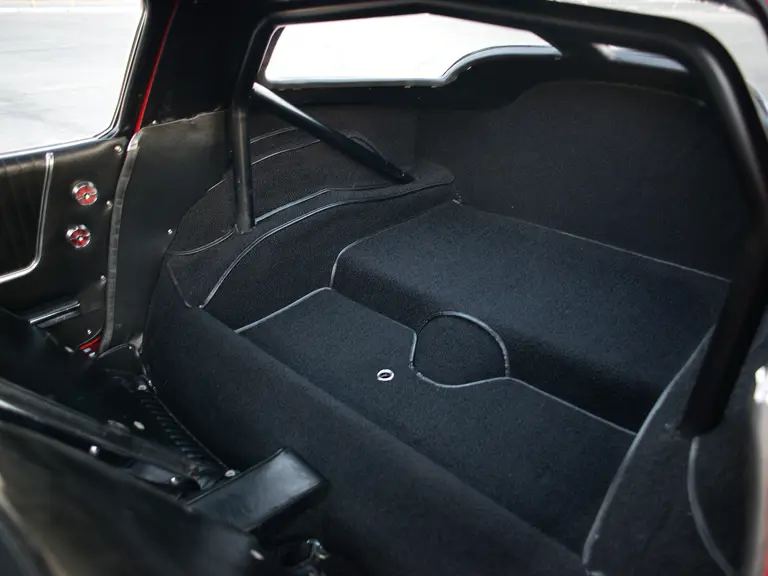


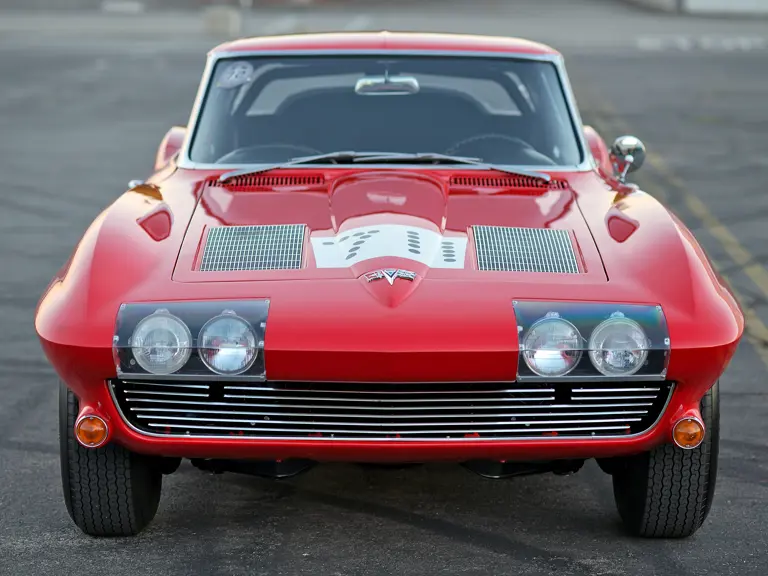
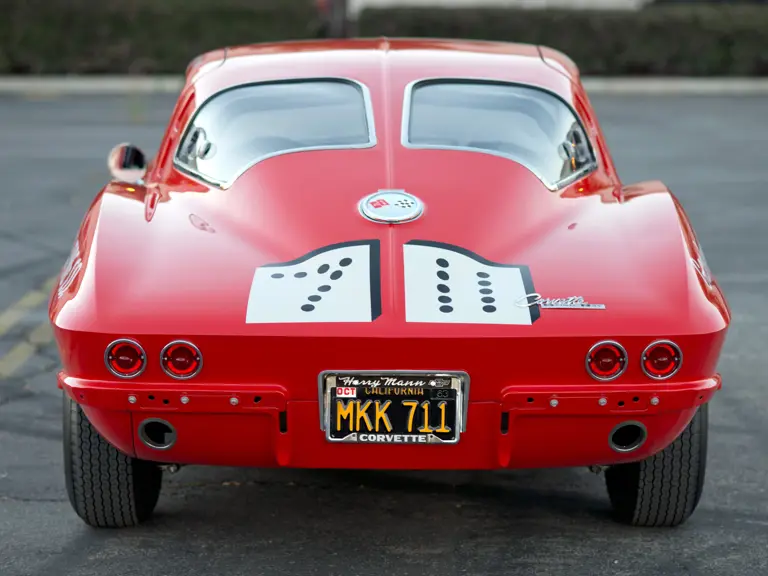
 | Monterey, California
| Monterey, California
